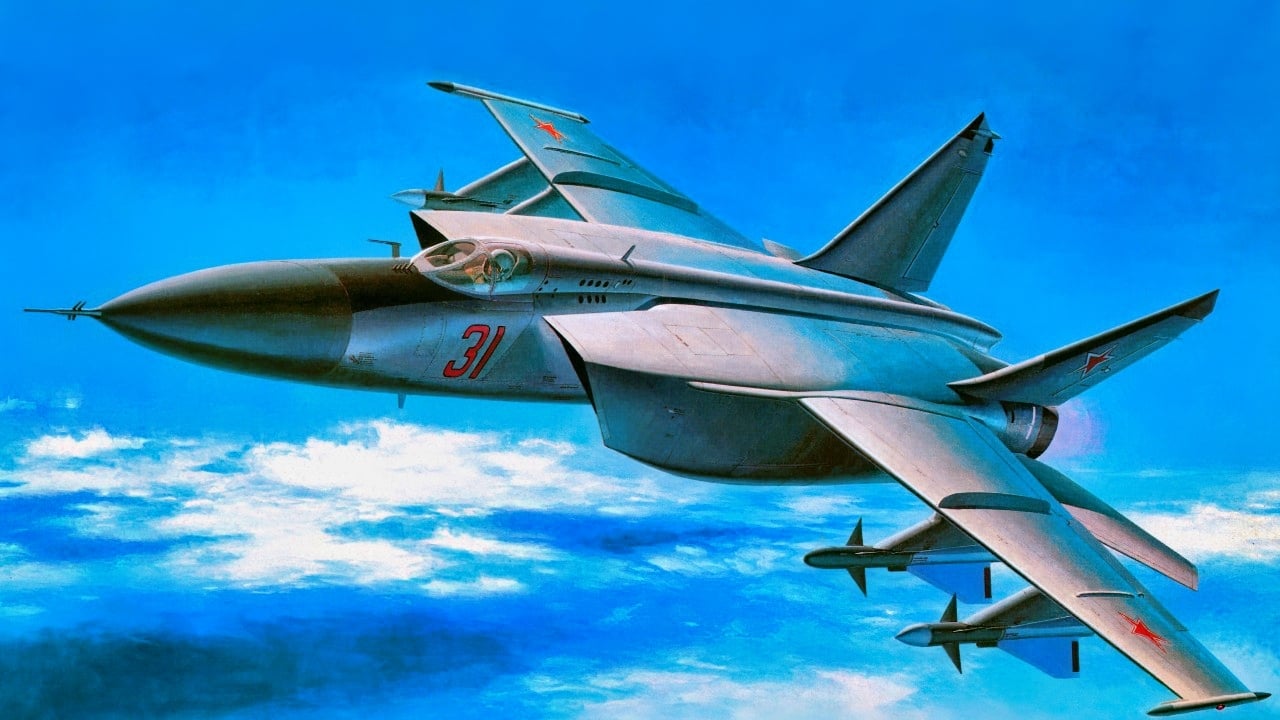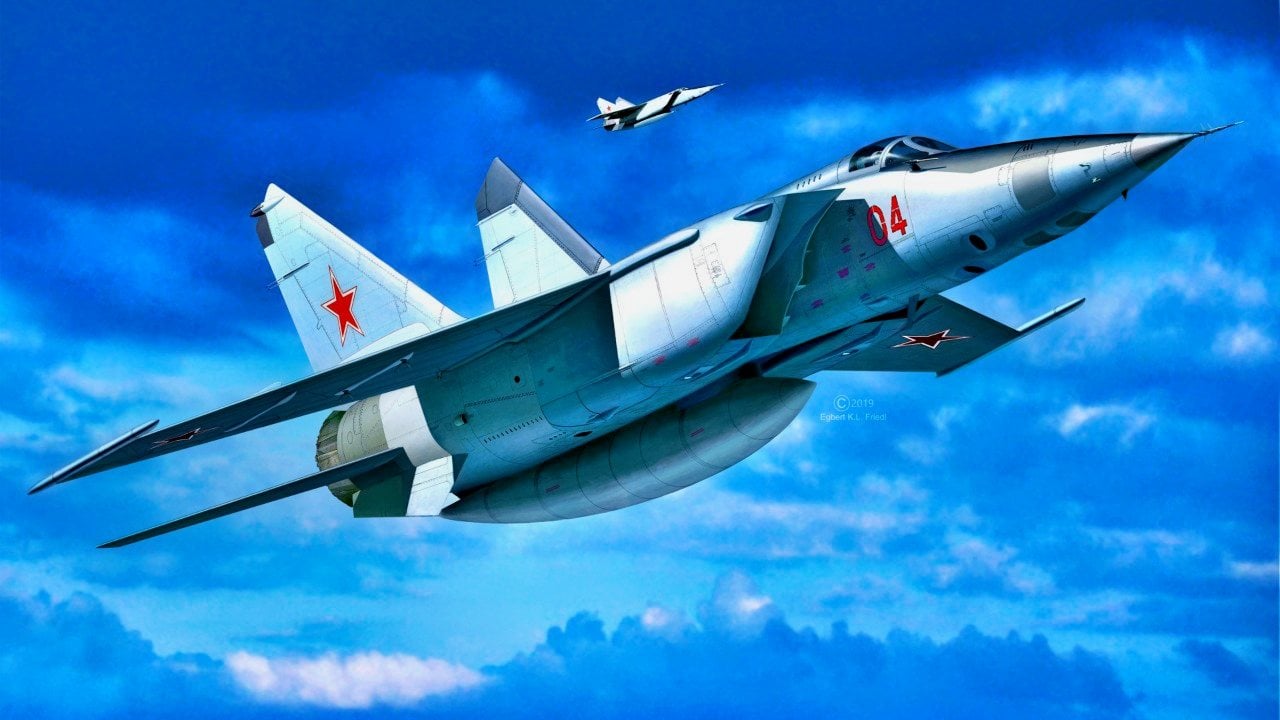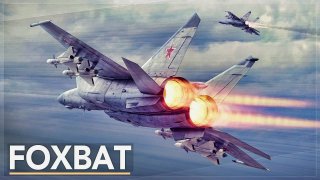Russian-Made MiG-25 Foxbat Shot Down a U.S. Fighter in Combat
The MiG-25 still remains the fastest jet fighter-interceptor of all time, with an on-paper max airspeed speed of Mach 3.2 and a practical max airspeed of Mach 2.8.
What You Need to Know: The MiG-25 "Foxbat," a Soviet Cold War-era interceptor, remains one of the fastest jet fighters ever built, with an on-paper speed of Mach 3.2.

-Originally designed to counter the U.S. XB-70 Valkyrie bomber, the MiG-25 achieved only one air-to-air combat kill—a tragic moment during the Persian Gulf War when Iraqi pilot Zuhair Dawoud shot down U.S. Navy F/A-18 Hornet pilot LCDR Michael Scott Speicher.
-Speicher, initially classified as MIA, was later confirmed KIA in 2003. While the MiG-25 is now mostly retired, its legacy endures as a symbol of Cold War fears and geopolitical conflict.
The MiG-25 Foxbat: Cold War Icon and Tragic Gulf War Killer
Of all the Cold War-era fighters and interceptors designed in the Soviet Union, none genuinely scared the hell out of Western airpower strategists and tacticians quite like the Mikoyan-Gurevich MiG-25 (NATO reporting name “Foxbat”). Though still slower than America’s Lockheed SR-71 Blackbird air-breathing spy plane (Mach 3.56) and North American X-15 rocket plane (Mach 6.7), the MiG-25 still remains the fastest jet fighter-interceptor of all time, with an on-paper max airspeed speed of Mach 3.2 and a practical max airspeed of Mach 2.8.
Ironically enough, it was the Soviets’ own fear of an adversary’s warbird that, in turn, had motivated them to design the Foxbat in the first place: the American-made XB-70 Valkyrie supersonic (to the tune of Mach 3) bomber, which ended up never even making it past the prototype phase. Ultimately, the Foxbat only ended up scoring one air-to-air kill against an American warbird … but it was still a tragedy for the United States of America.

MiG-25 Initial History in Brief
The MiG-25 made her maiden flight on March 6, 1964, and was officially introduced into the service of the Rodina (“Motherland”) in 1970; she was the last aircraft designed by Mikhail Gurevich before his retirement.
Six years after the MiG-25’s operational debut, a twenty-nine-year-old PVO (voyska protivovozdushnoy oborony, literally translated as “Anti-Air Defense Troops”) lieutenant by the name of Viktor Belenko helped dispel the dual shrouds of mystery and fear surrounding the Foxbat and did so by defecting and escaping in one. (For a detailed account of Belenko’s life, read the excellent book MiG Pilot: The Final Escape of Lt. Belenko by John Barron.)
Lt. Zawoud’s Triumph/LCDR Speicher’s Tragedy
Roughly fifteen years after Belenko’s daring escape (and the resultant treasure trove of hands-on intel that the Western intelligence community was able to gather on his airplane), the Foxbat scored her lone combat kill against a U.S. air asset. However, the MiG-25 driver in question was not a Russian (nor a citizen of any of the other former Soviet Republics for that matter), but rather a Saddam Hussein dictatorship-era Iraqi Air Force fighter pilot, then-Mulazim (“2nd Lieutenant”) Zuhair Dawoud.
It was January 17, 1991, the first night of the Persian Gulf War (aka Operation Desert Storm), the multinational coalition campaign that ultimately ended Saddam’s occupation of the tiny oil-rich nation of Kuwait. That fateful night, Zawoud, attached at the time to the 84th Fighter Squadron, scored the Iraqi Air Force’s only air-to-air kill of the Gulf War, when he shot down then-Lieutenant Commander (later posthumously promoted to Captain) Michael Scott Speicher’s U.S. Navy F/A-18 Hornet.

In Dawoud’s own words (as quoted by Dario Leone in an April 17, 2019, article titled “Iraqi MiG-25 Foxbat Pilot explains how he was able to shoot down Lt Cdr Speicher’s F/A-18 Hornet the first night of Operation Desert Storm”):
“I reported what happened to the GCI [ground control intercept] and he told me to return to my original intercept course as I had “targets at 38km [20.5 miles]. ‘Meanwhile, my radar became ready. I locked a target 38km [20.5 miles] from me and at 29km [15.6 miles] I fired [the] R-40RD missile from under my right wing. I kept the target locked with my radar [un]till I witnessed a huge explosion in front of me. I kept looking for the aircraft going down spirally to the ground with fire engulfing it.’”
The Hornet, call sign “AA403,″ crashed 48 miles (77.2 km) due south of Qadessiya. Speicher ejected but lost his life soon thereafter; he was initially designated killed in action (KIA), but sometime thereafter his status was changed to Missing In Action (MIA) due to rumors and circumstantial evidence that he had survived and been taken prisoner. However, the 2003 Iraq War (aka Operation Iraqi Freedom) and the resultant overthrow of Saddam showed that to be wishful thinking.
Where Are They Now?
Leone doesn’t elaborate upon Dawoud’s current whereabouts or where Zuhair was when he gave his interview remarks. The post-Saddam Iraqi Air Force has long since phased out the Foxbat; the last remaining current operator of the MiG-25 is the Syrian Air Force.
Now-CAPT Speicher’s remains were finally found by the U.S. Marines of the 3rd Battalion, 3rd Marine Division, on August 2, 2009, and later that month the remains were re-interred at Jacksonville Memory Gardens in Orange Park, Florida. A static display F/A-18 dedicated to CAPT Speicher is shown with his cockpit labeled at the National POW/MIA Memorial & Museum.
About the Author: Christian D. Orr
Christian D. Orr is a Senior Defense Editor for the National Security Journal (NSJ). He is a former Air Force Security Forces officer, Federal law enforcement officer, and private military contractor (with assignments worked in Iraq, the United Arab Emirates, Kosovo, Japan, Germany, and the Pentagon). Chris holds a B.A. in International Relations from the University of Southern California (USC) and an M.A. in Intelligence Studies (concentration in Terrorism Studies) from American Military University (AMU). He has also been published in The Daily Torch, The Journal of Intelligence and Cyber Security, and Simple Flying. Last but not least, he is a Companion of the Order of the Naval Order of the United States (NOUS).
Image Credit: Creative Commons.


